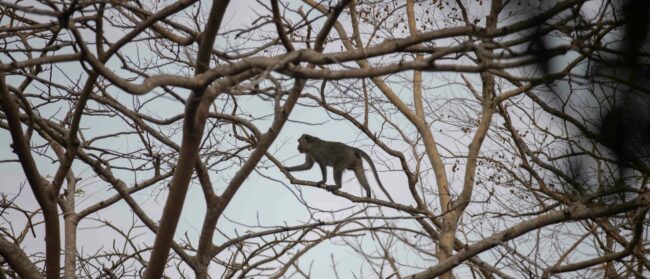Conservationists are celebrating this week after camera traps in Vietnam’s central Annamese mountain forests confirmed a sighting of a saola, one of the world’s rarest and most elusive mammals.
The WWF and the Vietnamese Forest Protection Department have been working tirelessly to safeguard the saola, or Asian Unicorn as it’s commonly known, since it was identified in 1992 during a survey of the Vu Quang Nature Reserve. As the first new mammal to be discovered for over 50 years, it is thought to be one of the most spectacular zoological discoveries of the 20th century.
“When our team first looked at the photos we couldn’t believe our eyes. Saola are the holy grail for Southeast Asian conservationists so there was a lot of excitement,” said Dr. Van Ngoc Thinh, WWF-Vietnam’s Country Director. “This is a breathtaking discovery and renews hope for the recovery of the species.”

Exact numbers are unknown, but it is thought the population of saola is down to just a few hundred individuals, possibly as low as 70 animals.
In a Save Our Species (SOS) project set up after the discovery of the saola by the WWF and Ministry of Forestry in Vietnam, sightings have been uncommon – to date scientists have categorically documented saola on just 4 occasions. The last confirmed sighting was in the Laos province of Bolikhamxay in 1999, although local villagers in the same province captured a saola in 2010 but the animal later died.
“In Vietnam, the last sighting of a saola in the wild was in 1998,” said Dang Dinh Nguyen, Deputy Head of Quang Nam Forest Protection Department and Director of Quang Nam’s Saola Nature Reserve. “This is an historic moment in Vietnam’s efforts to protect our extraordinary biodiversity, and provides powerful evidence of the effectiveness of conservation efforts in critical saola habitat.”
With its striking appearance, local hunters attracted by the unusually long horns have increasingly targeted the saola for onward sale to the illegal wildlife trade in the region. The animals are inadvertently caught in snares set for wild boar or deer in the lowland forest and are being driven from their natural habitats by sprawling populations along the northwest-southeast Vietnam-Laos border.
Working with local forest guards and the Vietnamese government, the WWF’s Preservation of Carbon Sinks and Biodiversity Conservation (CarBi) Programme has focused heavily on law enforcement, research and local patrols of the Saola Nature Reserves in Thua Thien Hue and Quang Nam provinces to remove snares and demolish poacher camps.
“These are the most important wild animal photographs taken in Asia, and perhaps the world, in at least the past decade,” said William Robichaud, Coordinator of the Saola Working Group of the IUCN Species Survival Commission. “They are also inspiring evidence of the effectiveness of the forest guards model to keep saola from sliding into the abyss of extinction. But more support is needed, so that WWF and other partners can scale up the initiative to additional parts of the saola’s range in Vietnam and Laos.”
The Annamite Mountains are rich in rare species where, along with the saola, recent discoveries include the large antlered muntjac and the Truong Son muntjac in the 1990s. Providing alternatives to hunting for the local populations is essential to the project and coupled with law enforcement efforts, poaching is reducing. This recent sighting of the saola in Vietnam bolsters hope for the species and it is hoped that the work by the WWF and partners will continue to allow the help the wildlife of the Central Annamites recover.
“We are committed to supporting the successful monitoring and law enforcement interventions to ensure the remaining saola, and other threatened species, are given the best possible conditions for recovery,” said Carsten Kilian, Senior Project Manager with KfW, the German Development Bank and a funding partner for WWF’s CarBi Programme in the Central Annamites. “We hope this remarkable find gives a much needed boost to efforts to save one of the world’s rarest and most distinctive large animals.”


